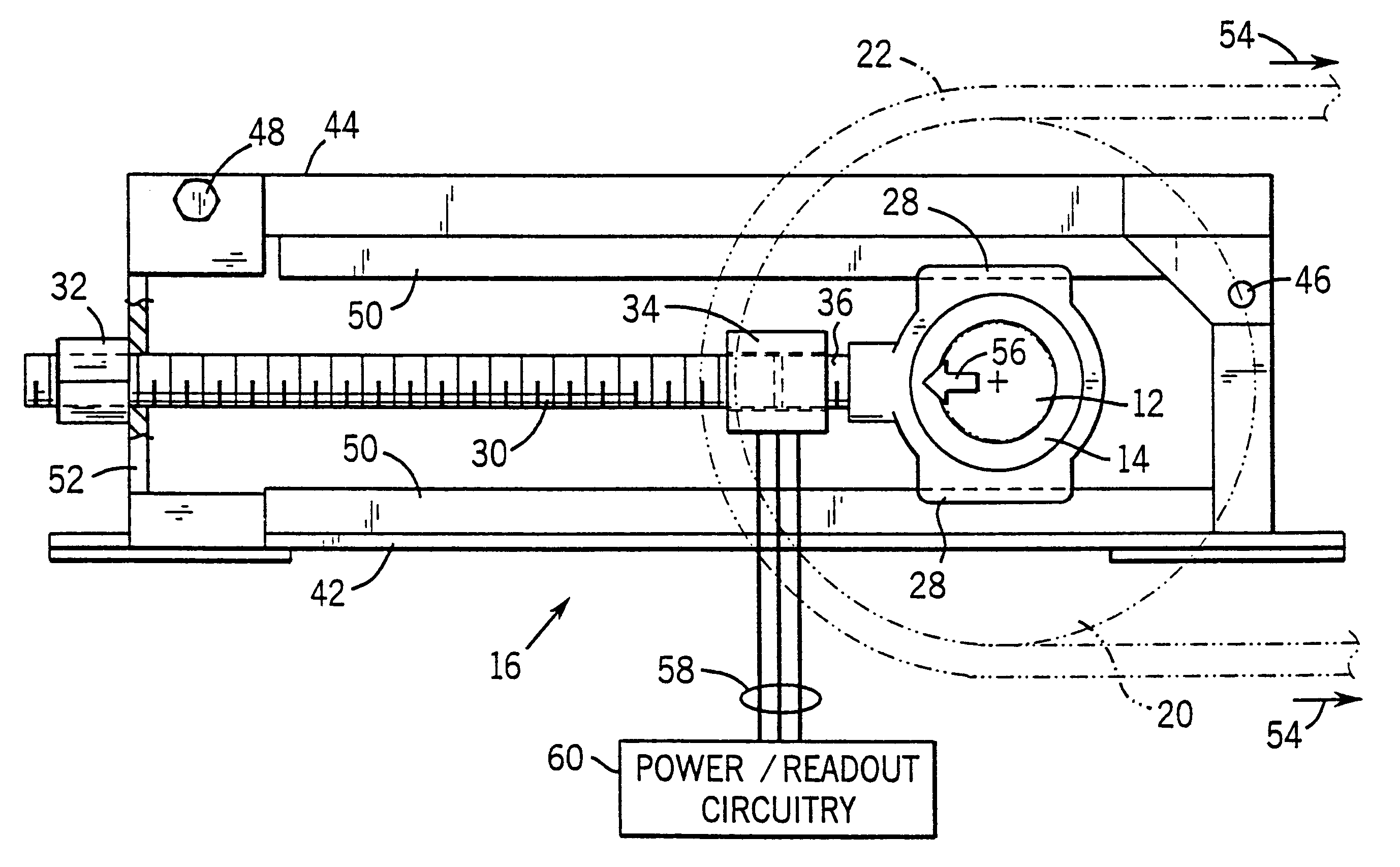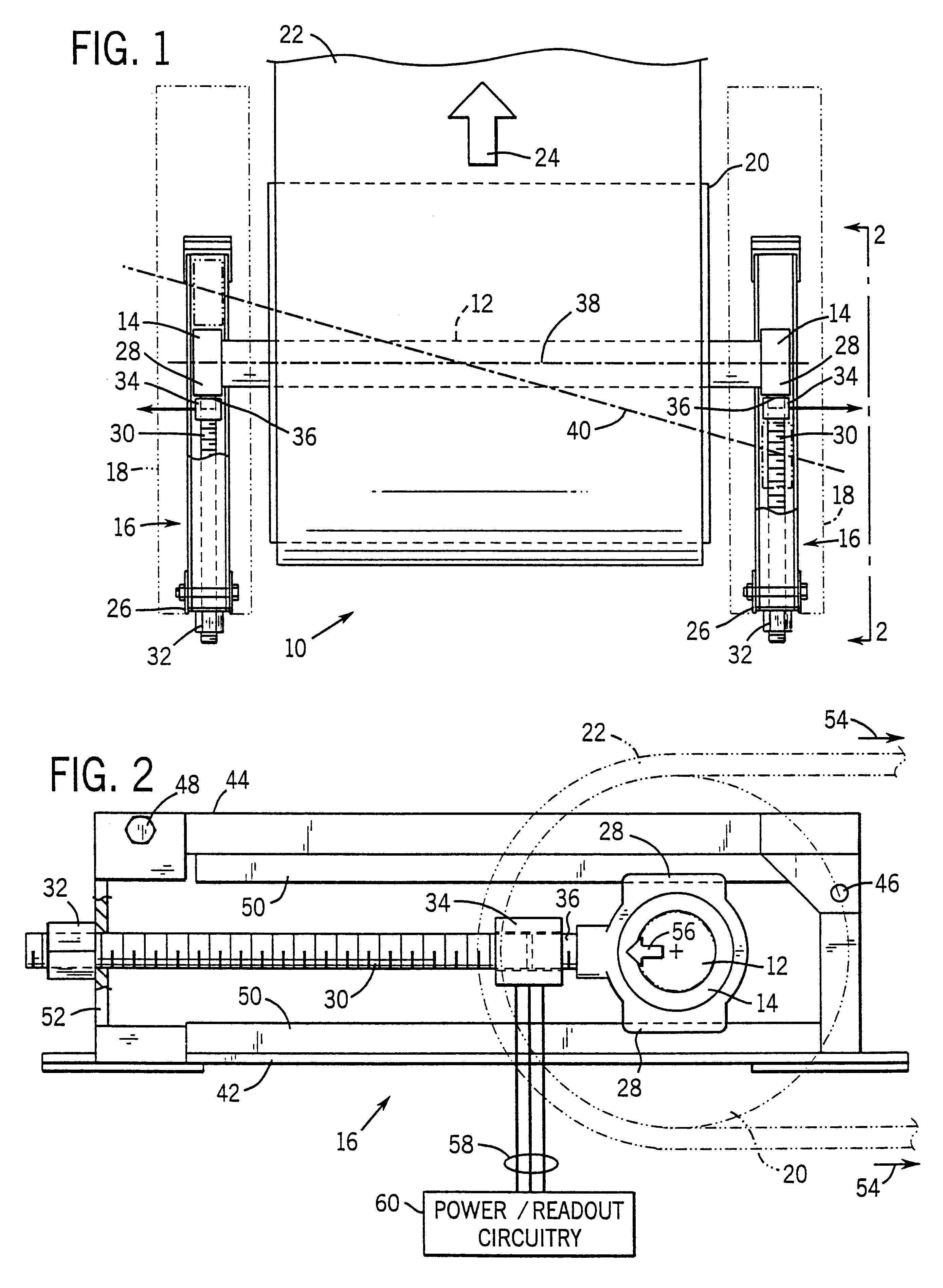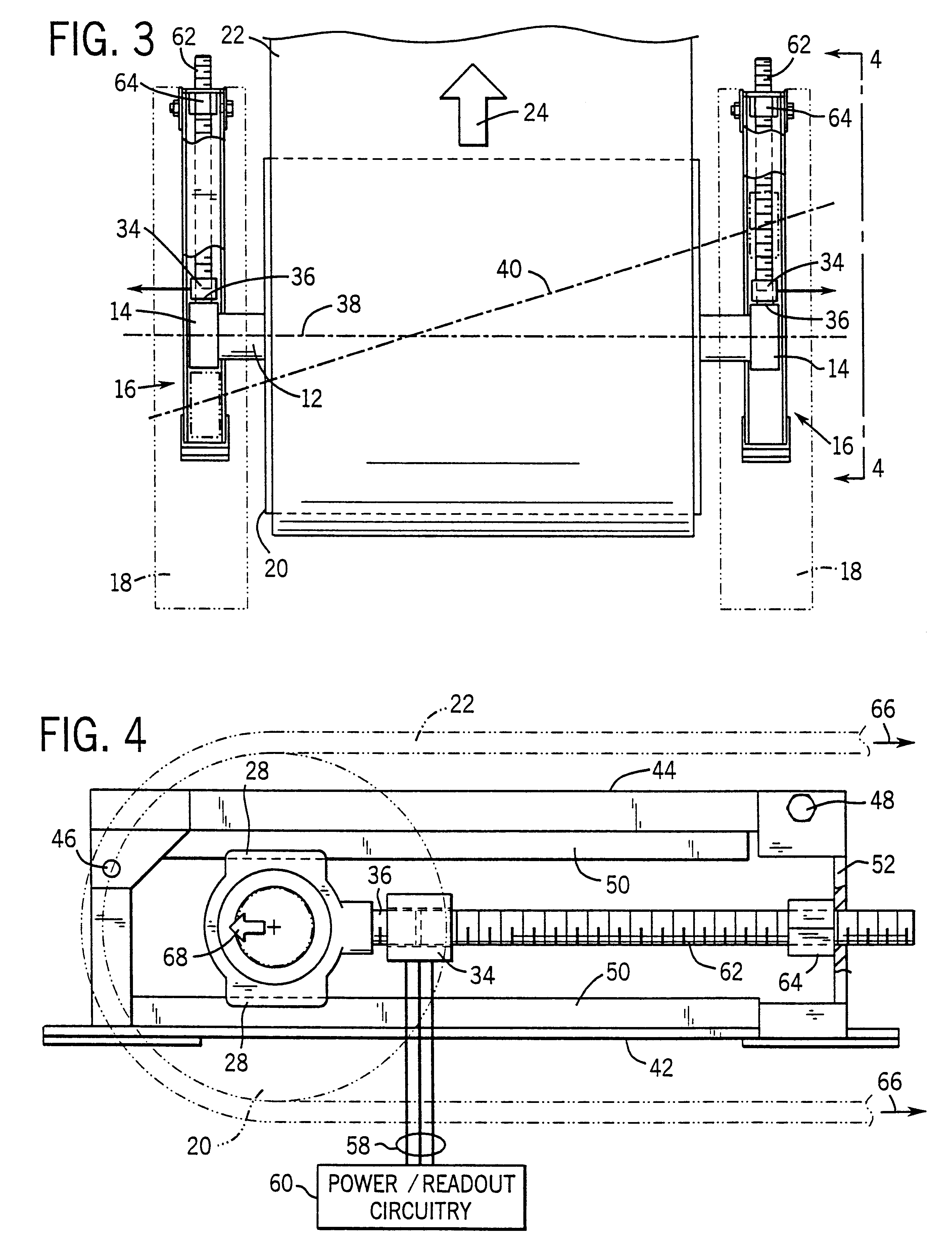Take-up frame system and method with force feedback
a technology of force feedback and take-up frame, which is applied in the direction of shaft and bearing, gearing, rotary bearing, etc., can solve the problems of accelerating component wear and eventual failure, conventional take-up frame structure, and failure to take into
- Summary
- Abstract
- Description
- Claims
- Application Information
AI Technical Summary
Problems solved by technology
Method used
Image
Examples
Embodiment Construction
Turning now to the drawings, and referring first to FIG. 1, a take-up frame system, designated generally by reference numeral 10, is illustrated as applied to lateral sides of a belt conveyor. System 10 includes a shaft 12 supported on both ends by bearing sets 14. While both active (i.e. driven) and passive (i.e. idler) shafts may be employed with the take-up frame adjustment technique described herein, in a conveyor application, take-up frames will typically be applied to a passive shaft or pulley assembly at an end of a conveyor belt distal from a motor and drive arrangement. To maintain appropriate loading on bearings and on the conveyor belt, take-up frames 16 are provided, in which bearings 14 may be slidingly adjusted to position shaft 12 as desired.
Take-up frames 16 are mounted on any appropriate machine support 18, such as a stand or support framework. In the illustrated embodiment, a pulley 20 is fixed to shaft 12 and rotates therewith. A belt 22 is passed about pulley 20 ...
PUM
 Login to View More
Login to View More Abstract
Description
Claims
Application Information
 Login to View More
Login to View More - R&D
- Intellectual Property
- Life Sciences
- Materials
- Tech Scout
- Unparalleled Data Quality
- Higher Quality Content
- 60% Fewer Hallucinations
Browse by: Latest US Patents, China's latest patents, Technical Efficacy Thesaurus, Application Domain, Technology Topic, Popular Technical Reports.
© 2025 PatSnap. All rights reserved.Legal|Privacy policy|Modern Slavery Act Transparency Statement|Sitemap|About US| Contact US: help@patsnap.com



